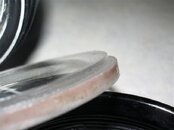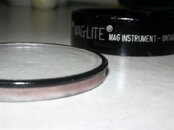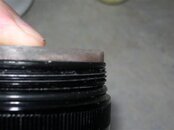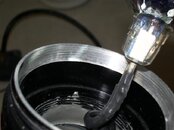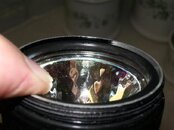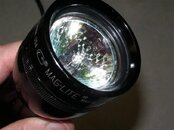Ben, thanks for the pics. That helps a lot. Can't wait to get started.
One thought: if I kept the o-ring under the bezel, and added a new one under the lens, I would then have a double seal. Might do that.
drabsab the EZ method is replace the Bezel top o-ring with a 3mm o-ring, and the one one between the head and bezel with a 2mm o-ring. I don't recall what the one in the tailcap is, but 2mm sounds right.
For mine I used both methods of sealing. I make the same type of lens as airsix, but I use a piece of 2" diameter PVC pipe and a flush cut router bit. I sanded the lighthead down with 600grit paper on my table saw. A nice smooth surface is critical.
To make the stepped lense -
Rough cut to size and hot glue 1/4" acrylic to a 8 or 9 inch long section of 2" diameter pvc pipe. The pipe will give you the right size disk, and makes a nice handle to get you're fingers away from the bit.
Use the flush cut router bit to cut the acrylic flush with the pvc pipe. Make sure the fit is right on the maglite bezel, If it's too big, sand it down until it fits just snug.
Take the ball bearing off the top of the router but and replace it with one size smaller bearing. this makes it into about a 2mm rabbiting bit. Adjust the table down so that you're only making about a 2mm in height cut, and run the acrylic disc through again. Now that your done, put the pipe and disk that are still glued together into boiling water to get the disk loose. (the glue melts) finish it up with some sandpaper and you're done.
I put o-rings on both sides to give myself a redundant seal.
Jake



